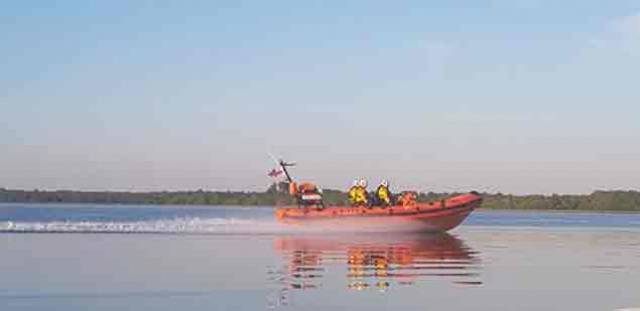Lough Ree RNLI’s inshore lifeboat crew have responded to four call outs in three days coming to the aid of 15 people.
Between 8am on Sunday last, 1 July and 2.20pm on yesterday, Tuesday 3 July, Lough Ree RNLI came to the aid of four children and 11 adults in separate call outs.
The first call out, on Sunday 1 July was to help two people whose boat had drifted onto one of the Yellow Islands to the south of Lough Ree. The couple had got into difficulty when trying to leave where they were anchored for the night. Conditions at the time were overcast with a breezy force 3-4 northerly wind. The lifeboat crew were able to remove the boat from the island, however after checking the boat when they were in deeper water it was apparent that the boat wasn’t able to continue under its own power. The crew brought the two people onboard and their boat to Athlone Marina.
On Monday, the lifeboat crew came to the assistance of eight people in two separate incidents when they had got into difficulty near the Hexagon Shoal on the eastern shore of Lough Ree near Killinure Point. Conditions on the lake on Monday were bright sunshine and a slight north easterly breeze.
The first call out was at 1pm to help four people - two adults and two children, onboard a boat that had got stuck on the Hexagon Shoal. The lifeboat crew were able to remove the boat from the shoal and the four onboard were able to continue on their way to Lecarrow to enjoy the rest of their holiday. The second call out was to two adults and two children onboard a speed boat that had lost power. The lifeboat crew on this occasion brought the four people and the boat to Quigleys Marina beside Coosan Point.
Meanwhile, yesterday, Lough Ree RNLI was alerted by a member of the public to a boat in difficulty near Hudson Bay on the western shore of Lough Ree. When the volunteers arrived on scene the boat was at anchor and the five people onboard had arranged assistance from a friend and while grateful to the crew for coming out, they did not require their help.
Speaking today, Sarah Bradbury, Lough Ree RNLI Lifeboat Press Officer, said: ‘It’s great to see so many people, both locals and visitors, enjoying Lough Ree and all that it has to offer. As we continue to enjoy the dry weather, we’d like to remind people to respect the water and to let people know that water levels may be lower than usual and to keep to the main navigation channels where the water will be deeper.’































































